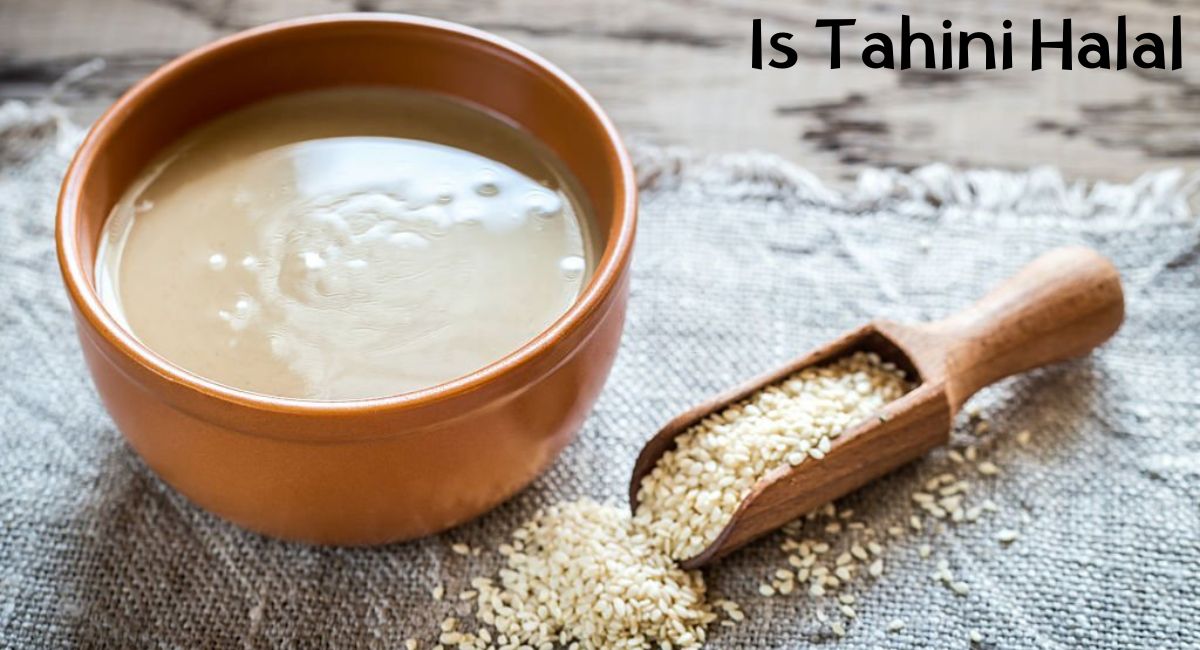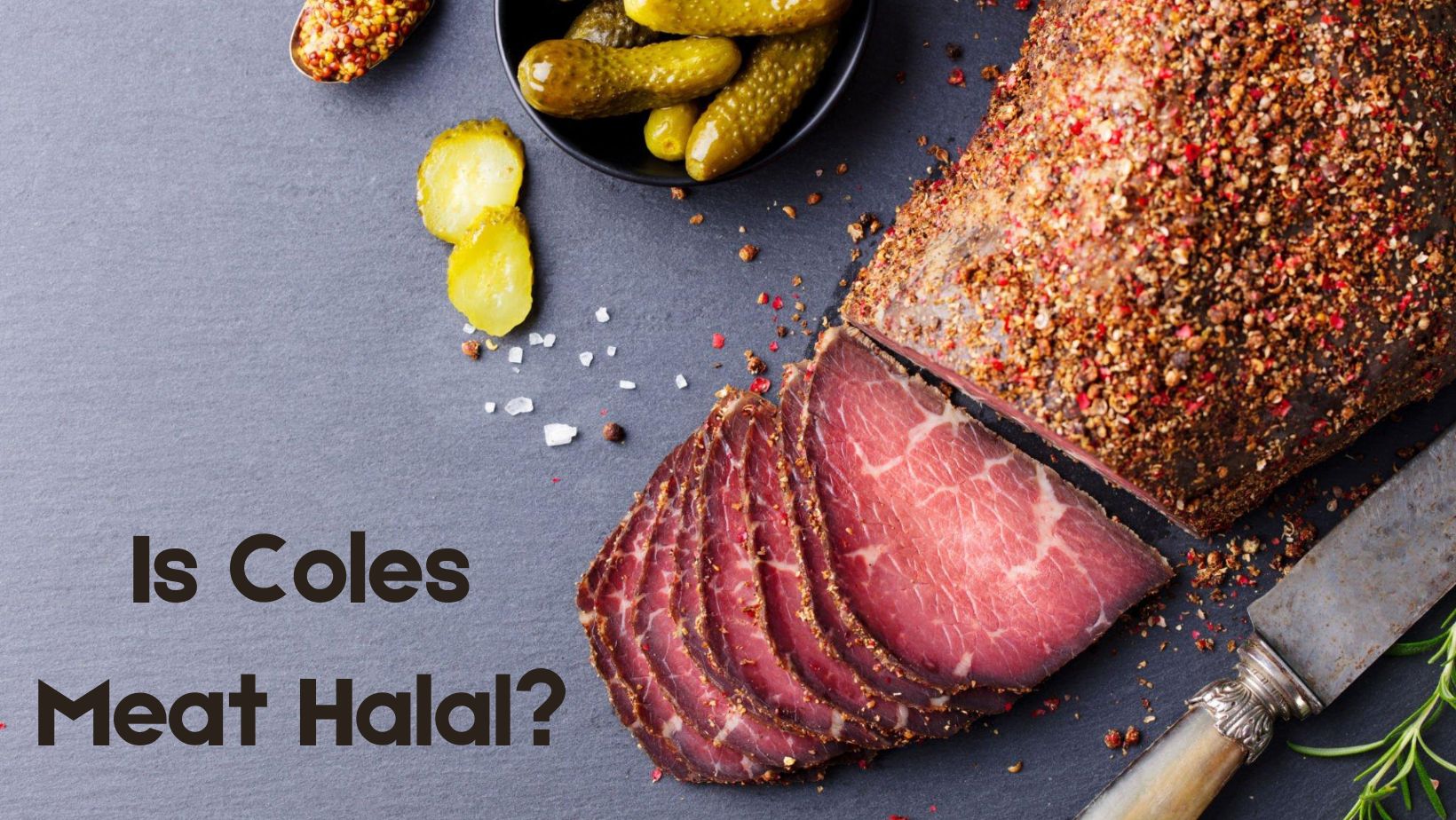Tahini is a versatile and delicious ingredient that has found its way into cuisines around the world. It’s a creamy paste made from ground sesame seeds and is a staple in many Middle Eastern and Mediterranean dishes, such as hummus, baba ganoush, and falafel.
For those who adhere to Islamic dietary laws, the question of whether tahini is halal is important. In this article, we will explore the halal status of tahini and provide insights into what factors determine its permissibility for Muslims to consume.
Understanding the sourcing, production methods, and potential additives in tahini can help individuals make informed choices about including this popular ingredient in their halal diets.
Is Tahini Halal
Whether tahini is considered halal or not depends on how it is produced and whether any non-halal ingredients or processes are involved.
In general, plain tahini made from sesame seeds and processed without any additives or flavorings is considered halal. However, you should always check the product label for any additional ingredients that may not be halal. Some commercial tahini products may contain additives, preservatives, or flavorings that could potentially be non-halal.
It’s also important to consider the production process. If tahini is produced in a facility that processes non-halal ingredients or if it comes into contact with non-halal substances, there may be concerns about cross-contamination. In such cases, you should look for tahini that is certified halal by a reputable halal certification organization to ensure that it meets halal requirements.
To be absolutely certain about the halal status of a specific tahini product, it’s a good idea to contact the manufacturer or check with a trusted halal certification authority. Islamic dietary laws can vary among different schools of thought and regions, so some individuals or communities may have specific preferences or guidelines regarding tahini consumption.
What is Tahini
Tahini is a creamy paste made from ground sesame seeds and is a fundamental ingredient in Middle Eastern and Mediterranean cuisines. Its history dates back thousands of years, with origins rooted in the Middle East.
Sesame seeds, the primary component of tahini, were one of the first crops cultivated by human civilizations in the region. The process of making tahini involves toasting sesame seeds and then grinding them into a paste, sometimes with the addition of a small amount of oil to achieve the desired consistency.
Historically, tahini has played a significant role in various ancient cultures. It is mentioned in ancient texts such as the cuneiform tablets of Mesopotamia and the hieroglyphics of ancient Egypt, where it was used as both a culinary ingredient and for its nutritional value.
In more recent history, tahini became a staple in Middle Eastern and Mediterranean cuisine, where it is used in dishes like hummus, baba ganoush, and halva, as well as in salad dressings and sauces. Its versatility and nutty flavor have made tahini a beloved ingredient worldwide, with a growing popularity in various global cuisines and modern health-conscious diets.
Today, tahini is readily available in international markets and has become a pantry essential for many home cooks and chefs alike.
Tahini Ingredients
Tahini is a simple yet flavorful paste made from just a few key ingredients, with the primary component being sesame seeds. Here are the basic ingredients for tahini:
- Sesame Seeds: These are the core ingredient of tahini. You can use hulled (white) or unhulled (brown) sesame seeds, depending on your preference. Hulled sesame seeds result in a milder flavor, while unhulled seeds offer a more robust, nutty taste.
- Oil: A small amount of oil is often added to help achieve the desired consistency and creaminess of the tahini paste. Commonly used oils include neutral-flavored oils like sesame oil or olive oil. The choice of oil can influence the final flavor of the tahini.
- Salt: Salt is an optional ingredient, but it’s commonly added to tahini for seasoning. The amount of salt can vary according to personal taste.
Some variations of tahini might include additional ingredients for flavor, such as lemon juice, garlic, or herbs, especially when it’s used as a sauce or dip in recipes like tahini sauce or tahini-based salad dressings.
How is Tahini Made
Homemade tahini allows you to tailor the flavor and texture to your preference, whether you prefer it thick and rustic or smooth and creamy. It’s a versatile ingredient that can be used in a wide range of dishes, from savory to sweet, and is a staple in Middle Eastern and Mediterranean cuisines.
Here is a step-by-step process for making tahini:
Ingredients:
- Sesame seeds (hulled or unhulled)
- Oil (e.g., sesame oil, olive oil)
- Salt (optional)
Instructions:
- Optional Toasting (Step): Preheat your oven to 350°F (175°C). Spread the sesame seeds evenly on a baking sheet. Toast the seeds in the preheated oven for about 10-15 minutes, or until they turn golden brown. Toasting is optional but can enhance the flavor of the tahini.
- Cool the Sesame Seeds: Allow the toasted sesame seeds to cool completely before proceeding. If you skip toasting, skip this step.
- Grind the Sesame Seeds: Place the cooled sesame seeds in a food processor or blender. You can also use a mortar and pestle for a traditional touch. Start grinding the sesame seeds at a low speed and gradually increase it to high. You may need to scrape down the sides of the bowl to ensure even grinding. Continue blending until the sesame seeds break down into a thick, crumbly texture.
- Add Oil: With the food processor or blender running, slowly drizzle in a small amount of oil. The type of oil you use will influence the flavor of your tahini. Continue blending and adding oil gradually until the tahini reaches your desired consistency. Some people prefer a thicker tahini, while others prefer it to be smoother and runnier.
- Optional Seasoning: If desired, add a pinch of salt to taste. You can also customize your tahini by adding other seasonings like garlic, lemon juice, or herbs at this stage.
- Blend to Perfection: Blend the tahini for an additional minute or two to ensure that it’s smooth and creamy.
- Taste and Adjust: Taste your tahini and adjust the seasoning, oil, or any other flavors to your liking.
- Transfer and Store: Transfer the finished tahini to a clean, airtight container or jar. Store it in the refrigerator, where it can be kept for several weeks. Over time, the tahini may separate, so give it a good stir before using.
What is the Difference Between Hummus and Tahini
Here’s a table outlining the key differences between hummus and tahini:
| Characteristic | Hummus | Tahini |
|---|---|---|
| Primary Ingredient | Chickpeas (garbanzo beans) | Sesame Seeds |
| Texture | Creamy dip or spread | Creamy paste |
| Flavor Profile | Earthy, nutty, and savory | Nutty and slightly bitter |
| Preparation | Chickpeas are cooked and blended with tahini, lemon juice, garlic, olive oil, and seasonings | Sesame seeds are ground into a paste with oil (and sometimes salt) |
| Usage | Typically used as a dip or spread for pita bread, crackers, or vegetables. Often used as a side dish or sandwich filling. | Used as a base ingredient in various dishes, including hummus, salad dressings, sauces, and desserts. |
| Common Variations | Flavored hummus varieties may include ingredients like roasted red pepper, spinach, or sun-dried tomatoes. | Variations may include seasoned tahini with garlic, lemon juice, or herbs. |
| Origin | Middle Eastern and Mediterranean cuisine | Middle Eastern and Mediterranean cuisine |
| Nutritional Content | Good source of protein and fiber from chickpeas. Provides vitamins and minerals. | Rich in healthy fats, protein, and minerals like calcium and iron. |
| Allergens | May contain allergens like sesame (if tahini is used) or garlic. | May contain allergens like sesame. |
| Appearance | Smooth and creamy with a beige or tan color | Smooth, thick paste with a light brown to light beige color |
| Common Pairings | Pita bread, falafel, vegetables, and as a dip or sandwich spread | Used as an ingredient in various recipes, including sauces, salad dressings, and desserts. |
| Popularity | Widely popular in Middle Eastern and Mediterranean cuisines and globally. | A fundamental ingredient in Middle Eastern and Mediterranean cuisines, less commonly used on its own. |
It’s important to note that hummus often contains tahini as one of its main ingredients, which contributes to its creamy texture and nutty flavor. Therefore, while these two foods are distinct, they are often enjoyed together in various dishes and complement each other well in terms of taste and texture.
What is Tahini Used for
Tahini is a versatile ingredient used in various culinary applications, primarily in Middle Eastern and Mediterranean cuisines. Here are some common uses for tahini:
- Hummus: Tahini is a key ingredient in hummus, a popular Middle Eastern dip made from chickpeas, tahini, lemon juice, garlic, and olive oil. It adds creaminess and a nutty flavor to the dip.
- Salad Dressings: Tahini can be used as a base for creamy salad dressings. When mixed with lemon juice, olive oil, garlic, and seasonings, it creates a delicious and nutritious dressing for salads.
- Sauces: Tahini-based sauces, such as tahini sauce or tahini yogurt sauce, are commonly used as condiments for various dishes. They pair well with grilled meats, roasted vegetables, falafel, and kebabs.
- Dips: Tahini can be thinned with water or lemon juice to create a simple dipping sauce for pita bread, fresh vegetables, or chips. It can also be combined with ingredients like yogurt or sour cream for added creaminess.
- Baba Ganoush: In addition to hummus, tahini is an essential ingredient in baba ganoush, a dip made from roasted eggplant, tahini, garlic, lemon juice, and seasonings.
- Desserts: Tahini is used in Middle Eastern and Mediterranean desserts, including halva, a sweet confection made from tahini and sugar, sometimes flavored with ingredients like pistachios or cocoa.
- Smoothies: Some people add tahini to smoothies for added creaminess and a nutty flavor. It pairs well with fruits like bananas and dates.
- Baking: Tahini can be incorporated into baked goods, such as cookies and brownies, to provide a unique flavor and texture.
- Grain and Vegetable Bowls: Drizzling tahini over grain bowls, roasted vegetables, or falafel bowls is a popular way to enhance the flavor and creaminess of the dish.
- Marinades: Tahini can be used as an ingredient in marinades for meats or tofu, adding flavor and helping to tenderize the protein.
- Sushi Rolls: Some sushi recipes incorporate tahini-based sauces for added flavor and creaminess.
Tahini’s rich, nutty taste and creamy texture make it a versatile ingredient that can be used in both savory and sweet dishes. Its popularity has grown beyond its traditional Middle Eastern and Mediterranean roots, and it is now used in a wide range of global cuisines and contemporary cooking.
Also Read
Is Mayonnaise Halal Certified: Dive into the world of condiments as we explore whether mayonnaise is Halal or Haram. Discover the key ingredients and considerations that determine its status in Islamic dietary guidelines.
Is Ranch Dressing Halal Certified: Explore the creamy realm of ranch dressing and find out if this popular condiment aligns with Halal dietary restrictions. We break down the ingredients and provide insights into its suitability for your culinary choices.
Is Tartar Sauce Halal Certified: Delve into the world of seafood accompaniments as we investigate whether tartar sauce adheres to Halal principles. Discover the components and factors that determine its acceptability within Islamic dietary guidelines.
Is Aioli Halal Certified: Join us on a flavorful journey as we dissect aioli to determine whether it meets the criteria of being Halal or Haram. Explore the ingredients and considerations that shape its status in Islamic dietary rules.
Is Hummus Halal in Islam: Explore the world of hummus, a beloved Middle Eastern dip, and find out whether it complies with Halal dietary regulations. We unravel the ingredients and considerations that determine its status in Islamic dietary practices.






